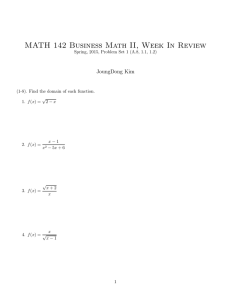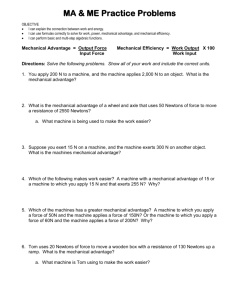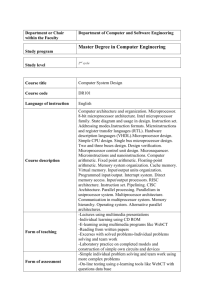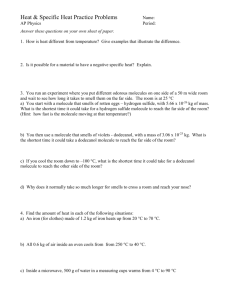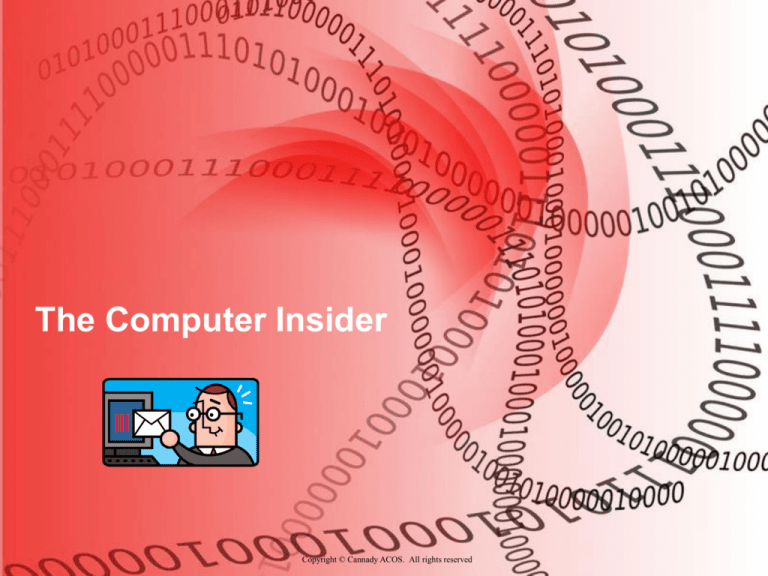
The Computer Insider
Copyright © Cannady ACOS. All rights reserved.
OBJECTIVE
The objective of this lesson is for
each student to diagnose hardware
and software problems-Part 1
Sample(s) of Behavior (SOBs):
• Identify computer components
• Describe computer components
• List input / output / storage /
processing devices
Throughout time, humans have invented ingenious calculating machines. One of the
earliest was the abacus. It's about 5,000 years old. Mechanical calculators that could add
and multiply (but not subtract!) were invented in the 1600s. In 1820, Charles Xavier
Thomas de Colman invented the arithmometer, a machine that could add, subtract,
multiply and divide. It was Charles Babbage though, in the early 1800s, who designed
mechanical calculating machines that were the true ancestor of today's computers. Ada
Byron King (Countess of Lovelace) was his programmer and today is considered the
mother of computer programming.
Babbage's design for his ultimate calculator, the Analytical Engine, was never produced.
It did anticipate the four components essential to modern computing. These components
are input, storage, processing and output.
The problem with Babbage's and other mechanical calculators was just that—they were
mechanical. The moving parts they relied on were slow and subject to breakdown.
What made modern computers possible was the invention of something that could do
calculations and other information processing with no moving parts and do it very fast.
That something was electronic components. With electronic components, a fast and
efficient machine such as Babbage proposed could be built with all four components
essential to modern computing.
Press the
Play Button
at the Site
Four Components of a Computer
A computer processes information. A toaster processes bread. Although it's a simpler device,
a toaster is a good way to demonstrate the four components of computer processing: input,
storage, processing, and output. Just watch the animation on this page for a moment.
Both a toaster and a computer have physical parts you can touch such as the keyboard and
mouse. We call these parts hardware.
Here the similarities between toaster and computer end and the differences begin. Only the
computer has something called software that enables it to figure out what to do with the
input you give it. You can't touch software. Software gives the computer the ability to process
many kinds of information. In contrast, all a toaster can process is bread (and the occasional
waffle).
Another difference is a computer has a microprocessor. The microprocessor is the device in
the computer that performs most of the tasks we ask the computer to do—from playing
computer games to graphing the number of people who prefer cricket to curling. The
microprocessor reads and performs different tasks according to the software that instructs it.
This ability is what makes the computer such a versatile machine.
The key thing to remember is this: both computer and toaster have four basic components to
how they operate (input, storage, processing, and output.) Unlike the toaster, the computer
is unlimited in the things it can do.
Press the
Play Button
at the Site
How Computers Get Input
Computers are information processing machines. That means that
you can use them to access and change information like numbers,
text, pictures, and even music. Think of what you can do to
modify a single sentence. Using the computer, it's easy to add,
delete, or rearrange words. To change a sentence with your
computer, though, first you have to get the sentence into your
computer.
Input devices are used to put information in your computer. You
type a sentence on your keyboard and it goes into the computer.
You speak into a microphone and your computer records your
words. You make funny faces at the video camera and your
computer records every one of them. Even the mouse you are
about to click to move on to the next section is an input device.
So, when you are ready, click it!
Press the
Play Button
at the Site
How Computers Store
Information
When you use a telephone, it does not store information. You speak into the phone,
the person on the other end hears what you say and then your words are gone. An
answering machine is different. It answers the phone and stores the information
given by the caller.
To process information, computers need to be able to store it. Otherwise, like the
phone, information would come and go before anything could be done with it.
Computers store all kinds of information. They store the information you give them,
instructions from the software you're using, plus the instructions they need to
operate. To store all this, they use two basic kinds of storage. Temporary storage is
for information actively being used for processing. Random Access Memory (RAM)
accepts new information for temporary storage. Long-term storage is for information
computers use again and again, such as the instructions the computer prepares itself
with every time you turn it on. These instructions are stored in read only memory
(ROM), a type of memory that does not accept new information.
Computers also use a variety of devices to store information that isn't actively being
used for processing. Hard drives, Optical Discs, storage, and Removable Media
Press the
Play Button
at the Site
How Computers Process
Information
Computers use integrated circuit to process information. Of the many
chips in a computer, the microprocessor is the most complex. It is where
the information you give a computer is processed.
A simpler kind of chip is used to make DVD players, remote controls, and
electronic calculators. The chips in these devices are embedded processors
. They're made to do one thing well and the instructions are coded into
them. You can't install new software to change what they do. For example,
you can't do word processing on your VCR.
Microprocessors are much more versatile than embedded processors.
Change the software you're using and you can go from doing word
processing to playing a computer game. Change the software again and
you can explore the Internet. Instead of being designed to do one thing,
microprocessors are designed to do whatever the software you select
instructs them to do.
Press the
Play Button
at the Site
How Computers Deliver
Information
All the processing power in the world wouldn't matter much if you
couldn't get output from a computer. You're looking at output right
now on your screen. You told the computer you wanted to view
this page and the software and microprocessor inside it responded
by putting the page on your monitor.
Other kinds of output include sound from your computer's
speakers and documents printed by your printer. Output can also
include things like MP3 files. They allow you to download music
from the Internet onto an MP3 player you can take with you
anywhere.
Press the
Play Button
at the Site
Which is Smarter - Human Brain
or Computer?
Computers are sometimes called electronic brains. But are they really brains? Let's compare.
First, let's look at how brains and computers work. A brain uses special cells called neurons that work together to
process information and respond with an action. A computer uses a collection of circuits called a microprocessor. One
is living cells, the other is electronic circuits. So there's a big difference there.
Now let's consider which is smarter. The answer depends on how you define smart. If smart is speed, a computer wins.
A person takes a few seconds to add two 3-digit numbers (245+987). A computer can complete several million longdivision problems (387÷243) in a single second. A computer is also tireless. The electronic circuits don't wear out. A
human doing long division all day would want lots of breaks—and a good night's sleep.
What if smart is having a good memory? In that case, a computer wins too. A computer can store an entire library of
books in its memory and recall them without a single mistake. Now consider a person. Have you ever tried just to
memorize a long poem? It's an enormous task for a person to memorize a book.
What if being smart is being able to make well-reasoned decisions? Here a person wins by a huge margin. Computers
can only calculate and sort information based on the software we design for them. How good their choices are depend
on how good the software is. Compare this to a person. Humans don't need software. We can sort and calculate facts
using our knowledge and experience. We also can make judgments and decisions based on whatever facts we're
confronted with—not just the facts a computer has been programmed to recognize. In this way, we're a lot smarter
than computers.
What if you define smart as the ability to think original thoughts? Here again, humans have an enormous advantage.
Humans think original thoughts every day. The evidence of these thoughts is in the inventions, art and books all
around us. The computer is one such invention. Are computers capable of original thought? So far, they're not.
Artificial intelligence is a field of science devoted to developing devices that someday may be able to reason and solve
problems. It's important to remember though that no matter how "intelligent" we make computers, they will only be as
smart as the software we humans create for them.
Summary
Four Components of a Computer
How Computers Get Input
How Computers Store
Information
How Computers Process
Information
How Computers Deliver
Information
Sources
The Journey Inside SM : A
Fascinating Look Inside the World of
Computers (2010)
http://educate.intel.com/en/TheJour
neyInside/ExploreTheCurriculum/EC_
IntroductionToComputers/ICLesson1
QUESTIONS????


